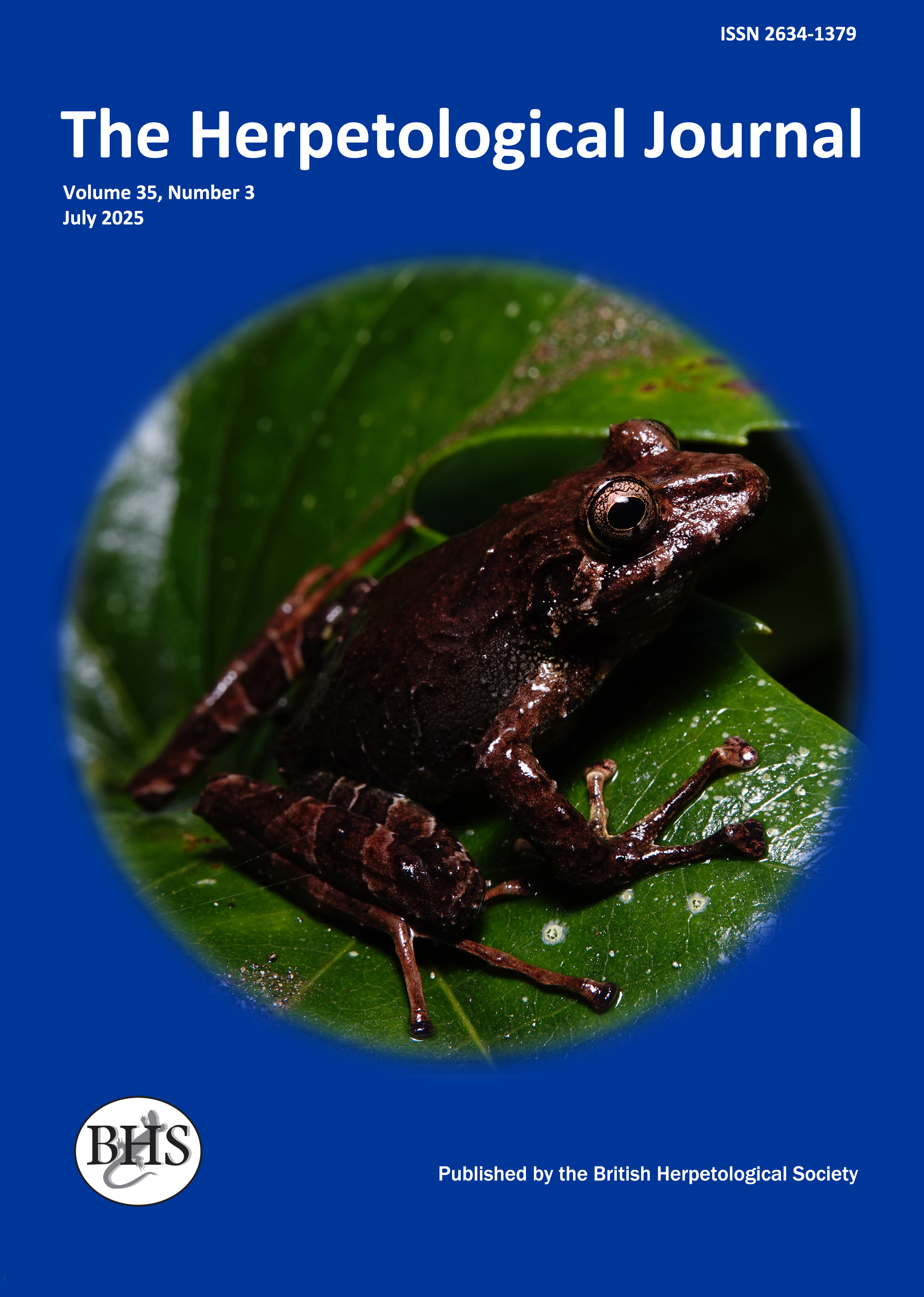
The Herpetological Journal
The Herpetological Journal is the Society's prestigious quarterly scientific journal. Articles are listed in Biological Abstracts, Current Awareness in Biological Sciences,Current Contents, Science Citation Index, and Zoological Record.
ISSN 0268-0130
2021 Impact Factor from Clarivate for the Herpetological Journal is 1.194, an increase of 0.332 from 2020.
pdf 02. The karyotype of Hynobius maoershanensis (Urodela: Hynobiidae), a newly described species with rare banding patterns
1821 downloads
Open Access
pp. 129-135
Authors: Li-yan, Qing; Yi-ding, Wang; Xiao-mao, Zeng; Qin, Chen & Mian, Hou
Abstract: The karyotype of Hynobius maoershanensis, a newly described salamander species from mainland China, is described for the first time using Giemsa conventional stain, C-banding and Ag-NORs techniques. All individuals have a diploid number of 56 chromosomes, which is consistent with karyotypes of the pond-type Hynobius group that lives in the lowlands and spawns in small ponds. Several differences distinguish H. maoershanensis from other Hynobius karyotypes: chromosome no. 13 is subtelocentric while in others it is metacentric; there is a prominent and unique dark C-banding pattern encompassing the whole short arm of chromosome no. 13, which can be used as a marker to distinguish this species from other species of Hynobius; multiple C-bands are found only in chromosomes 4, 9 and 13 in this species, much fewer than in other species; NORs are rarely located at the terminal position on the short arm of a large biarmed chromosome (no. 8) in H. maoershanensis, but are commonly observed on the small telocentric microchromosomes (nos. 20, 21 or 23) in other species with 2n=56. All five species from six populations of Hynobius from mainland China can be ecologically attributed to the pond-type group and have 2n=56. Karyologically, they form two subgroups. One subgroup has ten while the other has only nine pairs of telocentric microchromosomes.
Keywords: AG-NORS, C-BANDING, CHINESE HYNOBIID SALAMANDER

